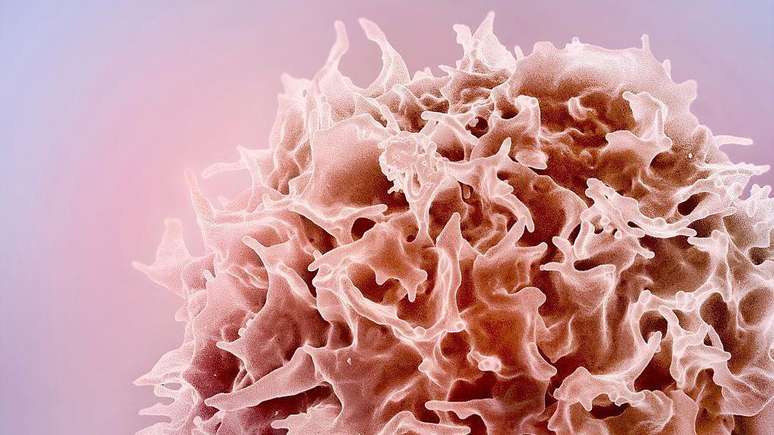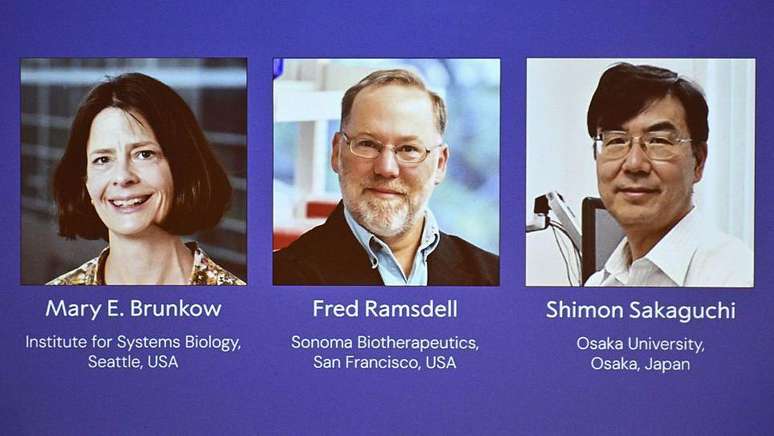The Swedish Royal Academy stressed that Mary E. Brunkon’s results, Fred Ramsdell and Shimon Sakaguchi were decisive to understand how the human immune system works.
The Royal Swedish Academy has awarded the Nobel Prize in Medicine from 2025 to Mary E. Brukow, Fred Ramsdell and Shimon Sakaguchi, for their discoveries in the field of so called peripheral immune tolerance.
It is a mechanism that prevents the immune system from damaging the body itself. This knowledge made it possible to develop new medical treatments.
“His discoveries were decisive to understand how the immune system works and why not all of us develop serious autoimmune diseases,” explained Olle Kämpi, president of the Nobel Prize Committee.
The Royal Swedish Academy has decided to divide the prize between the three researchers, who developed their work in the Universities of the United States and Japan.
Mary Brukow, born in 1961, works at the Seattle Institute of Systems Biology in the United States. Fred Ramsdell (1960), in the Sonoma Biotherapeutics of San Francisco, also in the United States. And Shimon Sakaguchi (1951) leads his research to the University of Osaka, Japan.
The prize is 11 million Swedish crowns (about $ 1.17 million, or about $ 6.2 million) and will be shared equally among the winners.
The graduate identified the regulatory T cells of “immune system”, which prevent immunological cells from attacking our own body.
Their discoveries have increased the development of cancer treatments and autoimmune diseases. And they can also allow greater success in transplants, according to the gym.
Many of these treatments are currently under clinical studies.
Years
Shimon Sakaguchi made the first important discovery in 1995, swimming against the current.
At that time, many researchers were sure that the immune tolerance developed only by eliminating from our body the potentially harmful immunological cells in the thymus, in a process called “central tolerance”.
But Sakaguchi has shown that the immune system is more complex and has discovered a class of unknown immunological cells that protect the body from autoimmune diseases.
On the other hand, Mary Brukow and Fred Ramsdell made another key discovery in 2001. They explained why a specific deformation of the rats was particularly vulnerable to autoimmune diseases.

They had discovered that rats contain a mutation in a gene called Foxp3. They have also shown that mutations in the human equivalent of this gene cause a serious autoimmune disease, hypex syndrome.
Two years later, in 2003, Shimon Sakaguchi was able to relate these discoveries to each other. He has shown that the Foxp3 gene controls the development of the cells identified in 1995.
These cells are now known as T. T -cell rules supervise other immunological cells and ensure that our immune system tolerates our tissues.
What are T cells
T cells, or T lymphocytes are a sort of immunological cells. Its main purpose is to identify and kill invading pathogens or infected cells.
They act using proteins located on their surface which, in turn, can adhere to the proteins from the surface of these impostors.
Each cell T is highly specific. There are billions of possible variations of these surface proteins and each can recognize a different goal.
Since T cells can remain in the blood for years after an infection, they also contribute to the “long -term memory” of the immune system, allowing them to organize a faster and more efficient response when exposed to an ancient enemy.
Knowing what aspects of the immune system are the most important, scientists can direct their efforts to make vaccines and treatments work.
How the different immunological cells work
When the body is infected, for example, with a virus, it reacts by producing white blood cells, called lymphocytes.
The main types of lymphocytes are B cells, the production of antibodies and T cells, which help the production of B -cell antibodies or act as murder cells to destroy the virus.
Some T and B cells are also transformed into long -term memory cells, which know again what to do the same infection.
Cells B and T “observe” the virus in different ways.
In general terms, B cells recognize shapes outside the virus, creating antibodies that are blocked or coupled to them. They work more or less like two pieces of a puzzle that adapt.
On the other hand, T cells recognize fragments of amino acids that make up the virus, including the fragments that are usually inside.
Each virus has many unique characteristics, both internally and externally. The immunological reaction of each person can end up producing a series of T and B cells that attack a wide variety of these characteristics.
This is sometimes called “width of the answer”. And a good width of the answer involves many different lymphocytes that observe different parts of the virus, making it difficult to hide the invader.
The study of T cells and their application to vaccines was of fundamental importance during the Covid-19 pandemic, due to its key role in the immune response.
Source: Terra
Ben Stock is a lifestyle journalist and author at Gossipify. He writes about topics such as health, wellness, travel, food and home decor. He provides practical advice and inspiration to improve well-being, keeps readers up to date with latest lifestyle news and trends, known for his engaging writing style, in-depth analysis and unique perspectives.








